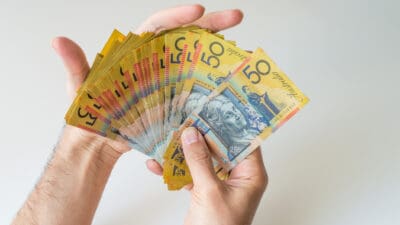The share market has stalled recently, especially for growth shares that led the spectacular bull run after the COVID-19 crash last year.
The S&P/ASX All Technology Index (INDEXASX: XTX), which includes so many of the growth darlings of 2020, has sunk almost 16% in the past 3 weeks.
But experts warn that in down times like this, it's critical investors don't go in their shell.
In fact, a depressed market is the best time to buy stocks — since prices are lower and the upside is greater.
Collins St Value Fund managing director Michael Goldberg posted last month on Livewire that 90% of returns are made in just 5% of trading days.
"Extreme conditions create the most attractive investing opportunities."
Don't fall victim to 'terminal paralysis'
Legendary investor and GMO co-founder Jeremy Grantham once wrote a letter to investors in March 2009 — in the middle of the global financial crisis crash.
He said many investors would liquidate to sit on a pile of cash in such times.
"As this crisis climaxes, formerly reasonable people will start to predict the end of the world, armed with plenty of terrifying and accurate data that will serve to reinforce the wisdom of your caution."
But then even as the actual crisis passes, according to Grantham, "terminal paralysis" can grip the market.
"Those who were over-invested will be catatonic and just sit and pray. Those few who look brilliant, oozing cash, will not want to easily give up their brilliance," he said.
"So almost everyone is watching and waiting with their inertia beginning to set like concrete."
But it always becomes obvious in retrospect that those with a big pile of cash will miss out on the market recovery.
"There is only one cure for terminal paralysis: you absolutely must have a battle plan for reinvestment and stick to it," said Grantham.
How to buy shares in a depressed market
The first and last thing every stock expert tells retail investors is that no one can perfectly time the market.
Grantham is no different.
"Remember that you will never catch the low," he said.
"Since every action must overcome paralysis, what I recommend is a few large steps, not many small ones. A single giant step at the low would be nice, but without holding a signed contract with the devil, several big moves would be safer."
Forager research analyst Chloe Stokes told The Motley Fool last month that every investor should have a "wishlist" of shares they would buy if their prices came down.
"It might seem like a waste of time, but you never know when the opportunity could come along to own a high-quality business at a more than reasonable price," she said.
"I wouldn't want to miss out on owning some of my favourite businesses if the opportunity presents itself again."
Grantham said much the same in his 2009 letter.
"A simple, clear battle plan – even if it comes directly from your stomach – will be far better in a meltdown than none at all."
The S&P ASX All Technology Index rose more than 93% in about 5 months after the COVID-19 crash.
There are plenty of other examples of post-correction rallies.
"In June 1933, long before all the banks had failed or unemployment had peaked, the S&P rallied 105% in 6 months. Similarly, in 1974 it rallied 148% in 5 months in the UK!" said Grantham.
"How would you have felt then with your large and beloved cash reserves?"
He added that the market doesn't start rallying when it sees light at the end of the tunnel.
"It turns when all looks black, but just a subtle shade less black than the day before."









